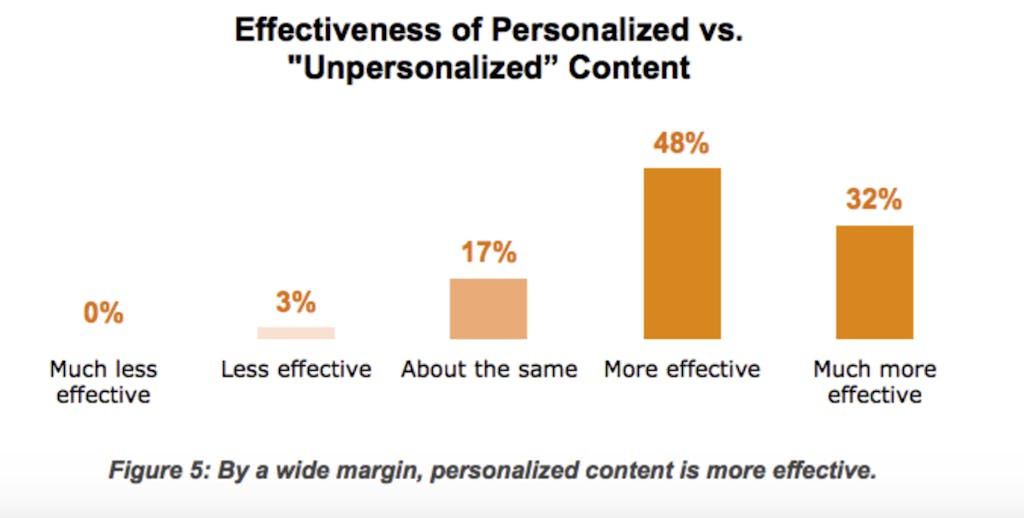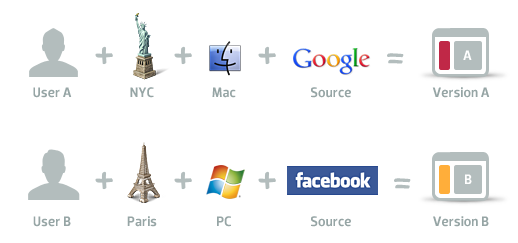- 13 minute read
- Content Marketing
- Social Media
All Skill Levels
Join hundreds of other operators and REGISTER NOW for Spark 2024 New Orleans October 13-15th!

Marketing your tour and activity company is the most common way to spread the word about your business, engage with past customers, and draw in new guests. But if you really want to drive conversions and see increased bookings, you have to personalize your content within the context of specific audiences.
Creating personalized marketing initiatives is all about developing and curating content that resonates with your customers or specific audiences through data collection or content auditing. The main goal of personalized marketing campaigns is to deliver highly targeted and relevant content based on the interests and needs of your audience.
The concept of personalized content has changed the marketing game for the better. At the height of the social media boom, content was all about quantity and reaching as wide of an audience as possible. Today, content is still king, but context has become the kingdom. In other words, your marketing campaigns are only as strong as your fresh, updated content, and a sharp focus on the context of each initiative is essential to reach specific audiences. Review the benefits and steps to audit your content.
This guide will cover the benefits of putting specific individuals at the focal point of content development and how you can personalize your marketing initiatives for each person’s context. Read on to find out why you should personalize your social and email initiatives.
Creating personalized content helps the right audience receive the relevant information at the optimal time, making them feel understood and eager to interact with the content. Personalized content helps you keep your website fresh, so repeat visitors see something new every time and enjoy engaging with your brand. And personalized content on social media means that viewers will enjoy seeing your messaging in their feeds.

Personalized content helps drive conversions. Tailoring your message to the reader through email or social media has more resonance with that person, prompting them to convert on your call to action, whether you’re asking them to follow you on Facebook or redeem a discount on one of your tours.
Personalizing content through data collection makes the customer feel as though you understand them and know where they are in their customer journey. By delivering more effective content that is relevant to them and what they are searching for, you create customer loyalty and retention because customers enjoy engaging with your content and following your calls to action (CTAs).
According to HubSpot, 80% of users find personalized content to be more or much more effective than generic messages you send to all of your customers.

While the personalized content approach doesn’t have to be restricted to a specific channel or platform, email and social are two great places to start your personalization efforts. No matter which platform you choose, personalizing your content requires playing into the context of the medium to effectively get your point across.
Email is an excellent place to get personal since the message is being delivered directly to an individual’s inbox. Avoid being generic with your email campaigns and be sure to address the recipient as personally as possible. Did you know that personalized subject lines increase open rates by 26%? (Campaign Monitor).
Customize the subject line with the recipient’s name or some topics of interest using a dynamic tag, a tag you can include in the email to personalize each message with the name of the recipient. Dynamic content, like the aforementioned tag, is a term for aspects of email or websites that change based on a recipient’s interactions with your company or their profile data like age, location, and more.
In the body of the email, use the recipient’s name in the greeting, and be sure to use copy that references their prior behavior. For example, if the person you are trying to reach follows your company on social media and has interacted with your website several times, you wouldn’t want to send them content intended for a first-time visitor to your site. You can use a dynamic call to action that changes based on who you’re emailing. For example, you might be asking a first-time booker to sign up for your newsletter (with a button to the sign-up page) or showing a repeat customer a button for a holiday tour discount.
Social media is another effective way to reach your audience with content relevant to their context. Anyone who follows you on Facebook or Twitter is likely within your target audience, but you can provide even more context for them by creating specific content you know will interest them.
 Pro-Tip: Content personalization on social media is all about creating different versions of content to show to your different audiences. For example, maybe you’re trying to reach local tour guests with a special offer. You can use geo-targeting to reach a specific audience based on their location. Keep in mind that videos are always a great option for shareable content on social media that many viewers are likely to enjoy.
Pro-Tip: Content personalization on social media is all about creating different versions of content to show to your different audiences. For example, maybe you’re trying to reach local tour guests with a special offer. You can use geo-targeting to reach a specific audience based on their location. Keep in mind that videos are always a great option for shareable content on social media that many viewers are likely to enjoy.
Another great way to personalize content for social media is to use retargeted ads. These ads target a specific audience made up of people who have visited your website or are a contact in your database. These people have browsed your website without making a booking, so you likely want to draw their attention back to your business with retargeting. This type of personalized content only reaches individuals who are familiar with your business but have not yet booked, so you can provide relevant information within their context.
 Looking for a quick and easy way to reach individuals? If you have some free time, respond to comments and direct messages. Anyone who comments on your posts is actively engaging with your content. Keep the conversation going with a message that’s relevant to the commenter and makes them feel heard and appreciated. This is a method of content creation that requires little effort or creativity on your part.
Looking for a quick and easy way to reach individuals? If you have some free time, respond to comments and direct messages. Anyone who comments on your posts is actively engaging with your content. Keep the conversation going with a message that’s relevant to the commenter and makes them feel heard and appreciated. This is a method of content creation that requires little effort or creativity on your part.
Now that you have an idea of how and where to personalize content for different audiences, you might be wondering how to find data to help you narrow down those specific audiences. Some of the information you can use includes:
You can combine several data points to determine a specific audience to target with a certain version of your content.

A common misconception about personalized content is the amount of time and resources you have to spend to acquire the personal data. There are actually many accessible sources and platforms that can provide this data for you, and there are plenty of tools at your disposal.
FareHarbor Dashboard: Booking history, locations, age of participants
Facebook: Age/gender, location, device usage
Google Analytics: Location, site behavior, age/gender, interests (find this info under the Audience Tab)
With the amount of content that exists today, it’s become harder and harder to stand out from the crowd. About 92% of marketers have reported using personalization in some way, making it more important than ever to keep up with this essential marketing trend. Companies that fail to adopt a personalized approach miss out on countless engagement opportunities and marketing initiatives.
Use the steps in this guide to personalize your content and stay up to date with the most important marketing topics by browsing our marketing and social media guides.